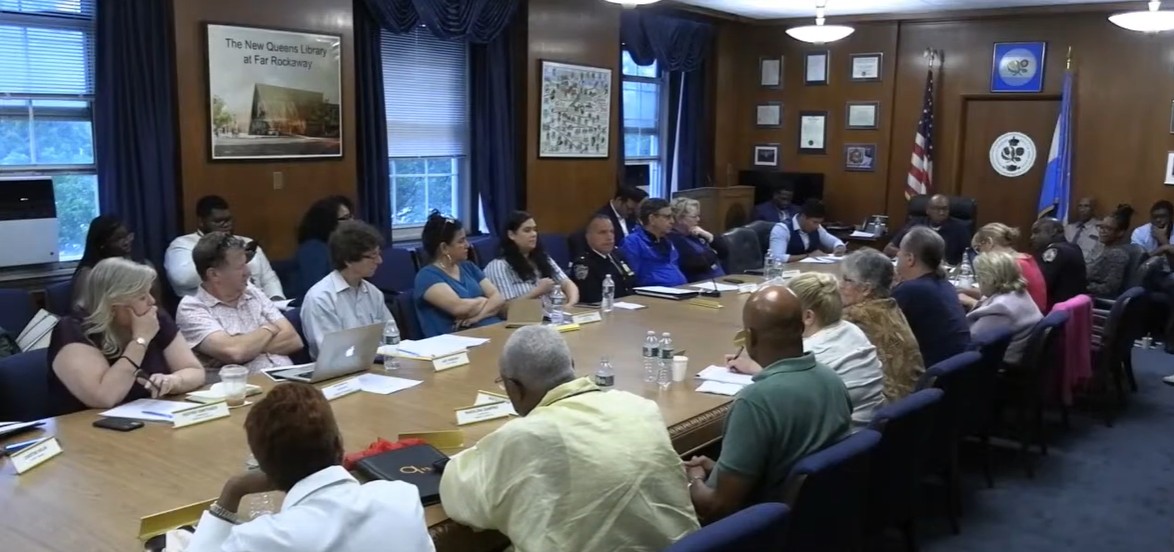 By LENORE SKENAZY| Agony is not something most of us want to live through, especially when the end result is not something great, like childbirth, or learning to walk again, or recovering from cancer. Agony when it is the last stop before death — or, worse, a long layover en route — is just plain bad.
By LENORE SKENAZY| Agony is not something most of us want to live through, especially when the end result is not something great, like childbirth, or learning to walk again, or recovering from cancer. Agony when it is the last stop before death — or, worse, a long layover en route — is just plain bad.
So why does New York State not let doctors prescribe the medicine that terminal patients need to shorten their torment?
Right now there is a case in our state Supreme Court, as well as four bills with bi-partisan support in the New York State Legislature, that all have the same goal: Let the dying die without suffering unbearable pain. The old term for this — “assisted suicide” — got it all wrong.
Suicide is when you kill yourself because you don’t want to go on living. “Aid in dying” is for folks who don’t have any choice.
They are terminally ill. Many would love to go on living — like that young woman with brain cancer last year, Brittany Maynard — but they are terminally ill. Death is around the corner, but first can come a period of screaming pain or torment. A prescription can offer a quicker exit from the torture chamber.
When Brittany learned her cancer was terminal, she moved to Oregon, because that state has allowed doctors to give aid in dying since 1997. When her glioblastoma reared up for its final blow, the 29-year-old scored the only victory she could against it. She said goodbye to the world and the people she loved, then raced past the gruesome final scene by taking pills — pills her doctor gave her.
That sounds like compassion to me. In New York State, it is a crime.
Currently, our law prevents doctors from even discussing the possibility of a less drawn-out ending. What that means is that people like Sara Myers, a New Yorker with amyotrophic lateral sclerosis, is looking at a day when “this disease will rob me of my ability to breathe. There is no medicine to stop or even slow the progression of this disease.” A doctor can’t save her life. But a doctor could save her the terrifying moment she finds herself unable to breathe, by giving her the pills to leave peacefully.
New Yorker Steven Goldberg has AIDS and his case is far gone.
“I’ve had to have toes amputated, I’m unable to swallow solid food,” he says.
He also has cancer of the larynx, his body is wasting away and he is in “chronic severe pain.” Is it compassionate to make him linger in this state when he is going to die soon anyway?
Eric Seiff, a New York lawyer, has bladder cancer.
“Should I decide my dying becomes unbearable, I want my physician to be able to prescribe medication I can take to achieve a peaceful death,” says Seiff.
Just knowing that this is possible would be a great comfort. Indeed, in Oregon, for every 300 people requesting aid in dying, only one person actually takes the pills. But knowing they can, makes the illness much more bearable.
Sara, Steven, and Eric are three of the plaintiffs in the Supreme Court case here. When the case was filed, they were quoted as a way of making an abstract notion concrete: This is not about doctors killing people, or panels deciding who should live and who should die. It is about granting mercy.
“Advances in medicine and technology have allowed people to live longer,” says David Leven, executive director of End of Life Choices New York, a group that is also part of the lawsuit, represented by the Disability Rights Law Center and Debevoise & Plimpton.
But while doctors are allowed to prescribe feeding tubes for people with dementia, and invasive treatments for those with terminal cancer — sometimes without the patient’s explicit consent — they can’t prescribe the lethal dose that the patients must ask for while they are sound of mind.
A peaceful death as life draws to a close is not suicide. It is the ending most of us hope for. It should not be a crime to grant our dying wish.
Lenore Skenazy is a keynote speaker and author and founder of the book and blog Free-Range Kids.





































